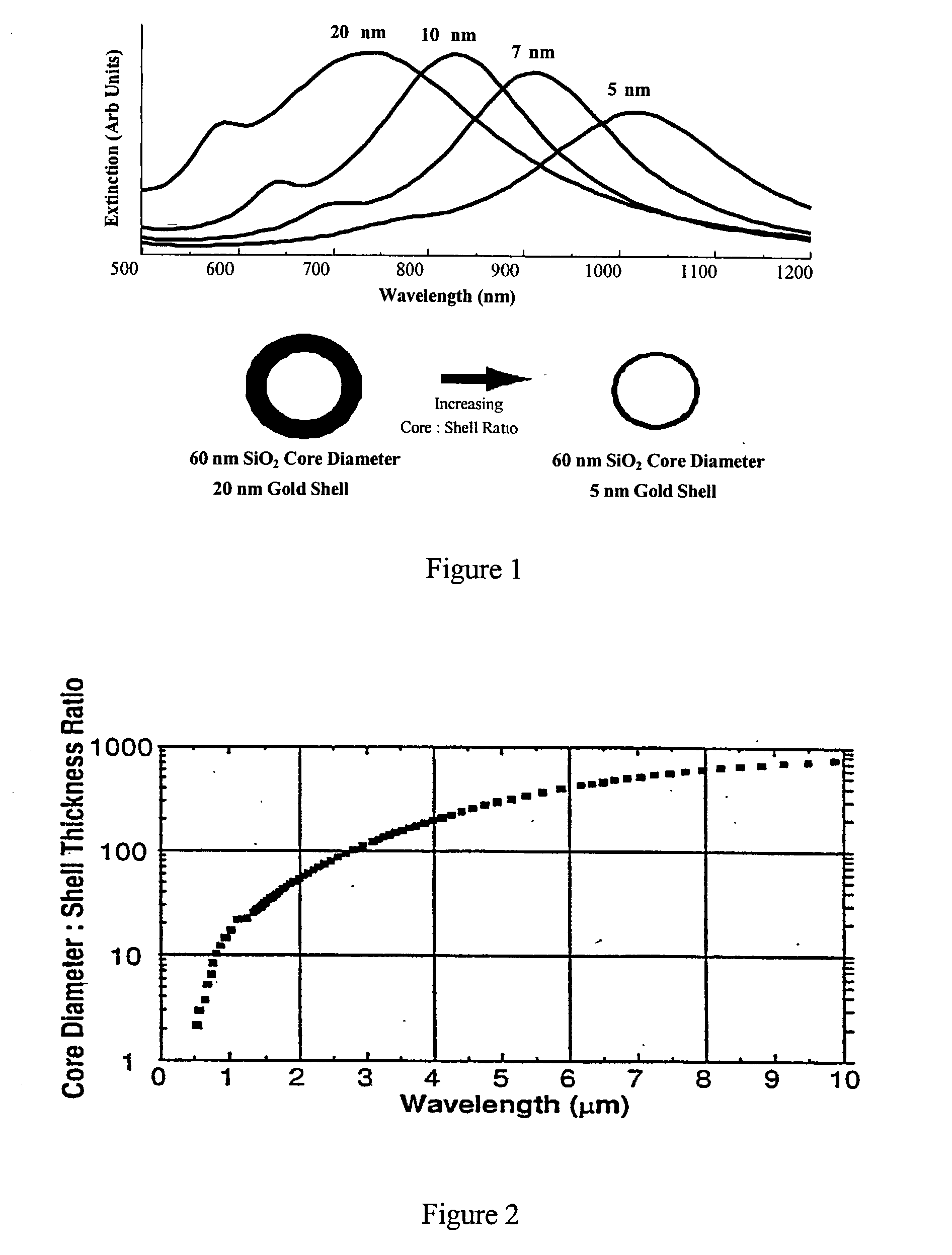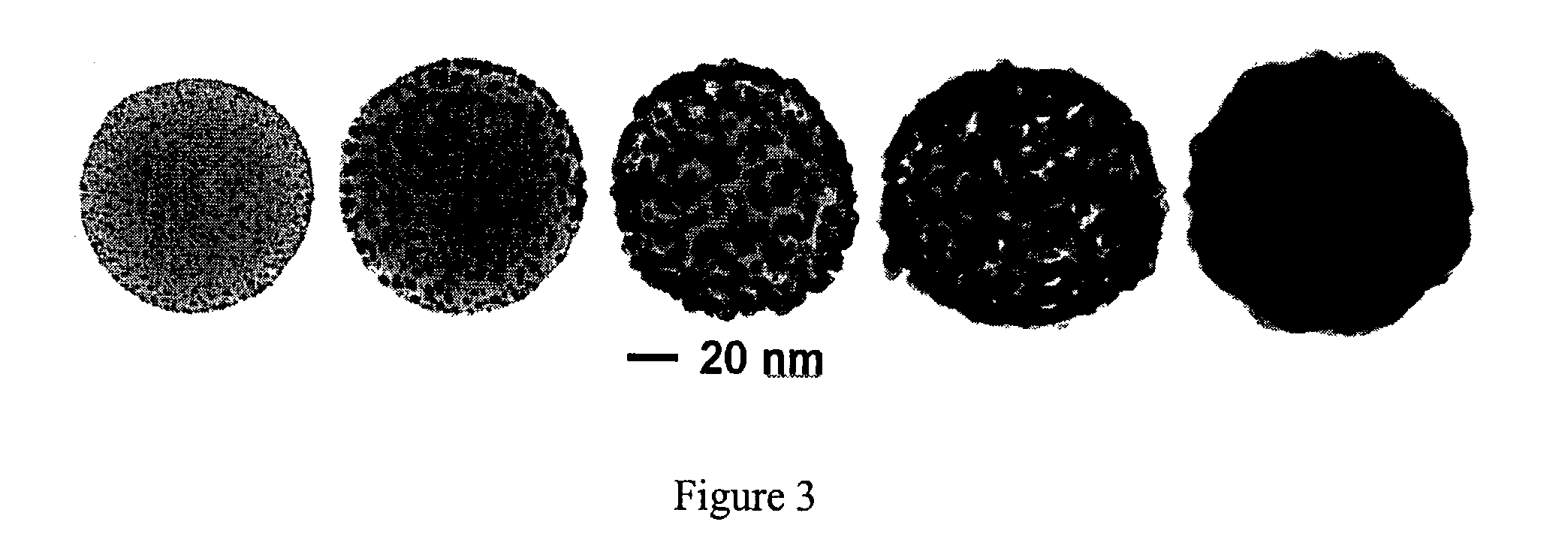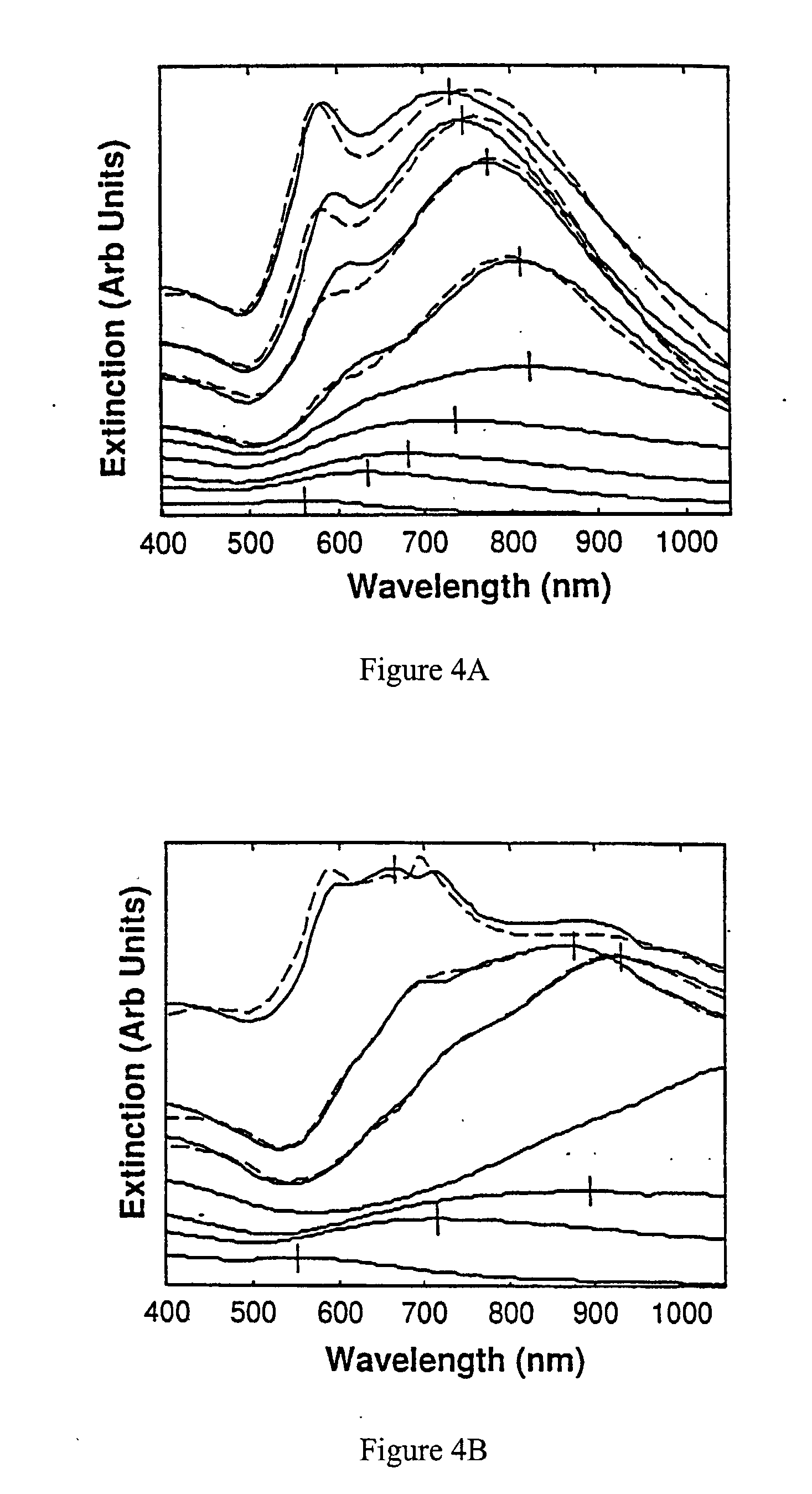Optomechanically-responsive materials for use as light-activated actuators and valves
- Summary
- Abstract
- Description
- Claims
- Application Information
AI Technical Summary
Problems solved by technology
Method used
Image
Examples
Embodiment Construction
Hydrogel Composite Materials
[0043] Two nanoparticle formulations were developed with distinct optical resonances at 532 nm and 832 nm. Silica-gold nanoshells that strongly absorbed light at 832 nm were fabricated using the methods described by Oldenburg et al. (U.S. Pat. No. 6,344,272, hereby incorporated by reference). A citrate gold colloid suspension with a peak resonance at 532 nm was made by dissolving 469 mg of sodium citrate in 742 ml of deionized water. The solution was brought to a boil, then 7 ml of 27 .mu.m HAuCl.sub.4 was added. The suspension was removed from a heat source 25 minutes after the addition of the HAuCl.sub.4. The citrate gold suspension was then centrifuged at 3100 RCF for 40 minutes, after which the pellet was collected and stabilized by the addition of 160 .mu.l of thiolated poly(ethylene glycol) (PEG-SH, 5000 molecular weight).
[0044] Two hydrogel materials were made as composites of each of these nanoparticle formulations and 1.75 M poly(N-isopropylacryl...
PUM
 Login to View More
Login to View More Abstract
Description
Claims
Application Information
 Login to View More
Login to View More - R&D
- Intellectual Property
- Life Sciences
- Materials
- Tech Scout
- Unparalleled Data Quality
- Higher Quality Content
- 60% Fewer Hallucinations
Browse by: Latest US Patents, China's latest patents, Technical Efficacy Thesaurus, Application Domain, Technology Topic, Popular Technical Reports.
© 2025 PatSnap. All rights reserved.Legal|Privacy policy|Modern Slavery Act Transparency Statement|Sitemap|About US| Contact US: help@patsnap.com



